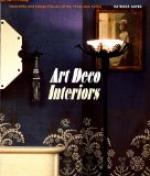Avoid the misuse of anything in furnishing. It needs only knowledge and patience to find the correct thing for each need. Better do without than employ a makeshift in decorating.
Inappropriateness and elaboration can defeat artistic beauty—but intelligent elimination never can.
Beware of having about too many vases, or china meant for domestic use. The proper place for table china, no matter how rare it is, is in the dining-room. If very valuable, one can keep it in cabinets.
Useless bric-a-brac in a dining-room looks worse than it does anywhere else.
Your dining-room is the best place for any brasses, copper or pewter you may own.
If sitting-room and dining-room connect by a wide opening, keep the same colour scheme in both, or, in any case, the same depth of colour. This gives an effect of space. It is not uncommon when a house is very small, to keep all of the walls and woodwork, and all of the carpets, in exactly the same colour and tone. If variety in the colour-scheme is desired, it may be introduced by means of cretonnes or silks used for hangings and furniture covers.
Avoid the use of thin, old silks on sofas or chair seats.
Avoid too cheap materials for curtains or chair covers, as they will surely fade.
Avoid too many small rugs in a room. This gives an impression of restless disorder and interferes with the architect’s lines. Do not place your rugs at strange angles; but let them follow the lines of the walls.
Avoid placing ornaments or photographs on a piano which is in sufficiently good condition to be used.
Avoid the chance of ludicrous effects. For example, keep a plain background behind your piano. Make sure that, when listening to music you are not distracted by seeing a bewildering section of a picture above the pianist’s head, or a silly little vase dodging, as he moves, in front of, above, or below his nose!
Avoid placing vases, or a clock, against a chimney piece already elaborately decorated by the architect, as a part of his scheme in using the moulding of panel to frame a painting over the mantel. In the old palaces one sees that a bit of undecorated background is provided between mantel and the architect’s decoration.
If your room has a long wall space, furnish it with a large cabinet or console, or a sofa and two chairs.
Avoid blotting out your architect’s cleverest points by thoughtlessly misplacing hangings. Whoever decorates should always keep the architect’s intention in mind.
Avoid having an antique clock which does not go, and is used merely as an ornament. Make your rooms alive by having all the clocks running. This is one of the subtleties which marks the difference between an antique shop, or museum, and a home.




